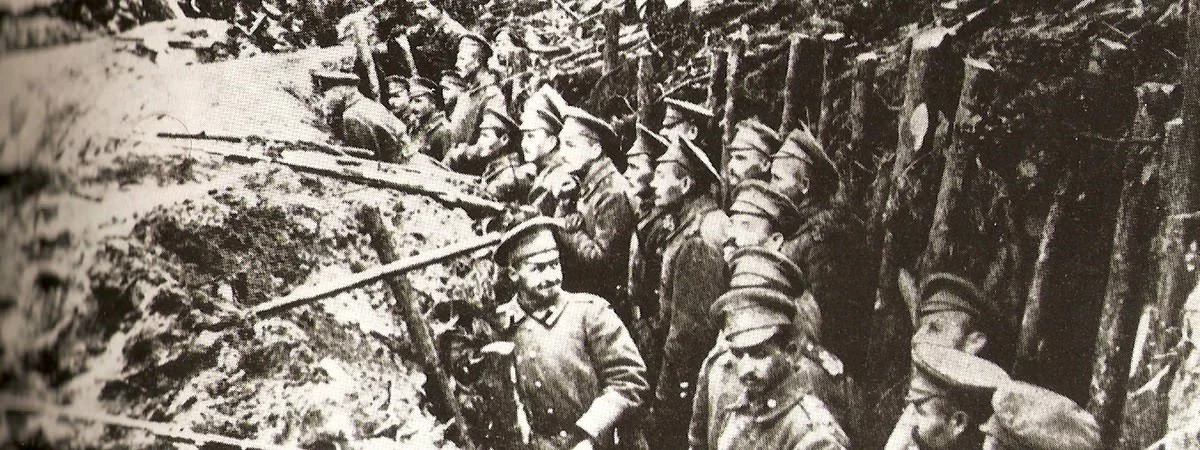Fought between July 28, 1914 and November 11, 1918, World War I was a global conflict between the Central Powers of Germany, Austria-Hungary, the Ottoman Empire and Bulgaria; and the Allies which was a coalition of many nations, most prominently the Great Britain, France, Russia, Japan and Italy. The Middle Eastern theater of the First World War saw action between October 29, 1914 and October 30, 1918. The two most important campaigns on the Middle Eastern Front were the Caucasus Campaign and the Gallipoli Campaign. The Caucasus Campaign was primarily a battle between the Russian Empire and the Ottoman Empire; while the Gallipoli Campaign was a naval expedition planned by the Allies and led by Britain and France against the Ottoman Empire. Here are the major battles and events of World War I which took place on the Middle Eastern Front including their dates, place and the nations involved.
THE GALLIPOLI CAMPAIGN
Date: February 1915 – January 1916
With the stalemate on the Western Front, the Allies were considering an offensive in another region of the conflict. After the Ottoman attack on Russian ports in late October of 1914 and the Russians declaring war on the Ottomans on 2nd November, Russian General Grand Duke Nicholas requested British assistance in early 1915. With an eye on controlling the Mediterranean, a naval expedition was thus planned by Britain and France to seize the Dardanelles Straits.

The offensive began in February of 1915, when the Allies attacked Dardanelles with their battleships. The attack proved to be a failure with Turkish fire sinking 3 ships in a single day and damaging many others. An amphibious landing was then planned with troops from New Zealand, Australia, India, France and Britain wading ashore at five beaches in Gallipoli in April and May, and again on 6th August at Sulva Bay. The Allies suffered close to 200,000 casualties in the long campaign and, by November, they had decided to evacuate their 105,000 remaining troops. The evacuation ended in January 1916, giving the Ottomans their only major victory in World War I.
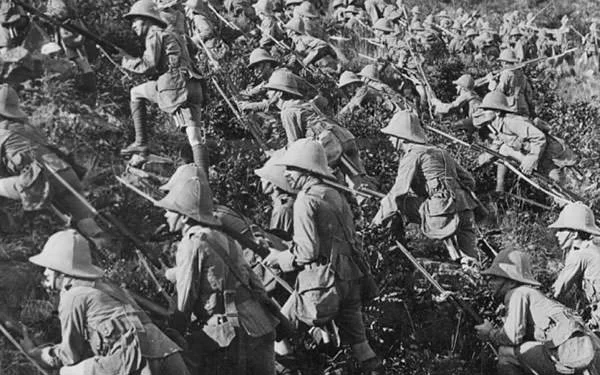
THE CAUCASUS CAMPAIGN
Home to the Caucasian mountains; the natural boundary between Eastern Europe and Western Asia, the Caucasus refers to the area situated between the Black Sea and the Caspian Sea. The Caucasus Campaign in WW1 was fought primarily between the Russian Empire and the Ottoman Empire in the regions extending from South Caucasus to the Armenian Highlands. The land warfare was accompanied by naval engagement in the Black Sea Region of the Ottoman Empire.
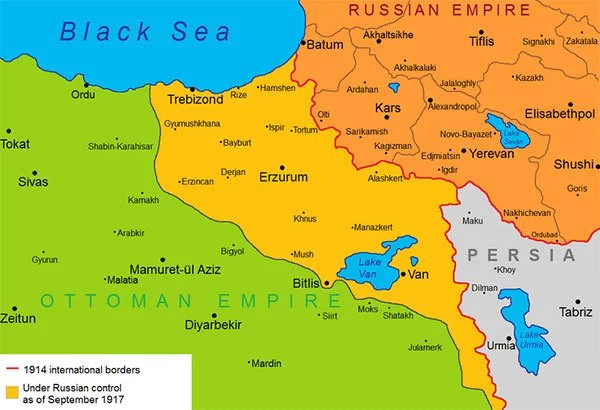
Bergmann Offensive
Date: November 2 – 16, 1914
Russian Caucasian Army under General Georgy Bergmann began the Caucasian Campaign by taking the initiative against the Ottoman Empire and invading Ottoman territory. The Ottoman 3rd Army launched a counter offensive by performing an enveloping movement leading to the defeat of the Russians and it was only the quick arrival of Russian reinforcements that saved them from further damage.
Battle of Sarikamish
Date: December 22, 1914 – January 17, 1915
After the initial Russian advance was blunted, powerful Ottoman commander and War Minister Enver Pasha planned an elaborate and intricate Napoleonic styled assault against the Russians. Going against the advice of Ottoman commander on scene, Hasan Izzet, Pasha did not account for Caucasian winter and suffered a heavy defeat by the Russians.
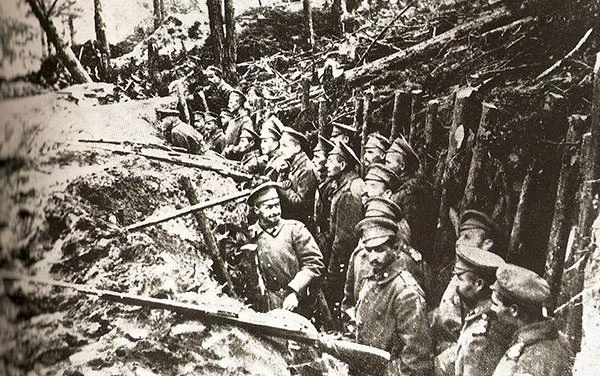
Battle of Bitlis
Date: July 1915 – August 1916
The town of Bitlis was the last stronghold of the Ottoman Empire to prevent the Russians from entering in Anatolia and Mesopotamia. The first military confrontation at Bitlis occurred in July 1915, when Russian troops launched an unsuccessful assault on the town’s fortifications. The second confrontation began in February 1916 and ended with the capture of Bitlis by new Russian corps, which largely consisted of the 1st Battalion of the Armenian volunteer units under the command of Andranik Ozanian.
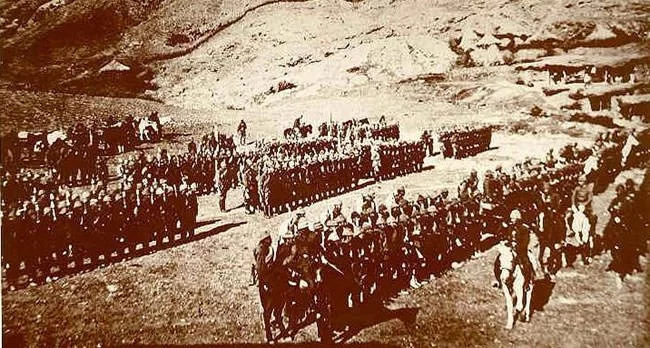
Erzurum and Trebizond Campaigns
Date: January 10 – April 15, 1916
The Russian Caucasus Army under Commander Nikolai Yudenich launched a major winter offensive to capture the strategic city of Erzurum. The battle ended on February 16, 2016 resulting in a victory for the Russians as the Ottoman forces suffered a series of unexpected reverses. As the next logical step, the Russians began naval and land operations on February 5, 2016 to capture the city of Trabzon. The Trebizond Campaign was another Russian success with Ottoman troops abandoning Trabzon on the night of April 15, 1916.

Ottomans invade Armenia
Date: May 21 – May 29, 1918
In early 1918, as the Russian Empire fell and the Bolsheviks signed a peace treaty with the Central Powers, the Armenians found themselves in a precarious situation. More than a million Armenians had already been killed in the Armenian Genocide in the Ottoman Empire, and now as the Russians withdrew, the Armenian lands were threatened by invading Ottoman forces. A small Armenian Army was thus assembled under General Tovmas Nazarbekian and Drastamat Kanayan. The Ottomans attacked in May of 1918 with the aim of crushing the Armenians, seizing Russian Transcaucasia and occupying the oil wells of Baku. The Armenian however emerged victorious at Sardarabad, Bash Abaran and Karakilisa and the nation of Armenia was born.
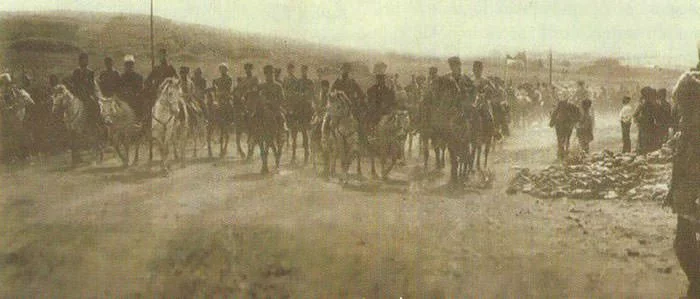
Battle of Baku
Date: August 26 – September 14, 1918
The last action on the front began between the Ottoman–Azerbaijani coalition forces led by Nuri Pasha; and Bolshevik–Dashnak Baku Soviet forces, later succeeded by the British–Armenian–White Russian forces led by Lionel Dunsterville. The battle thus saw brief re-enter into war of Soviet Russia. The Battle of Baku was won by the Ottoman–Azerbaijani coalition.

Armistice of Mudros
By October of 1918, the Arab revolutionaries along with Allied forces had destroyed much of Ottoman Empire’s fighting power. The fall of Bulgaria through an Allied invasion from Greece, now directly threatened the Ottoman Capital of Constantinople (Istanbul). With the enemy advancing on all fronts and the Central powers not in any position to assist, the Ottomans sued for peace. Hostilities on the Middle Eastern front ended with Armistice of Mudros, which was signed on October 30, 1918, between the Ottoman Empire and the Allied Forces.

